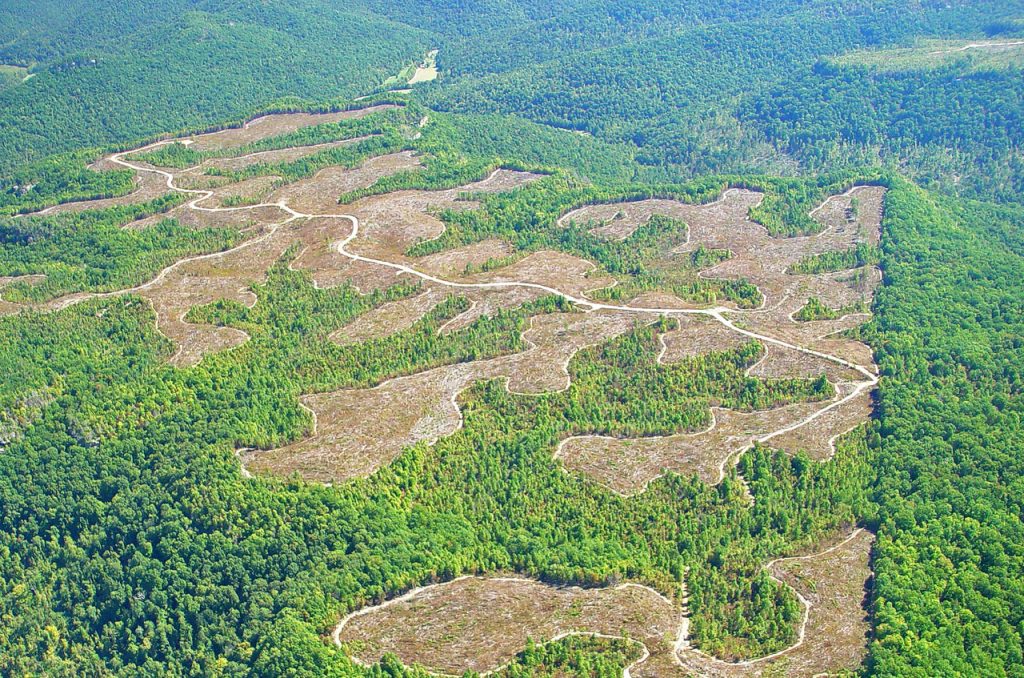
Forest Management
It can be deeply upsetting to see logging in mature forest, whether on private land or state forest owned by the public. Controlled burning of State Forest land can also be controversial. Logging and controlled fires are messy and disruptive, and seem terribly wrong to many people. Learning some basic forestry and wildlife management might help you understand and appreciate these practices.
The Ohio Appalachian foothill region has healthy and thriving forest lands and wildlife, largely due to good forest management by private and public forest owners. On large and small, public or private forest land, a variety of management methods has resulted in the forest diversity needed for maximum wildlife benefits. The Shawnee/Edge of Appalachia region is one of the most diverse in Ohio relative to plants and wildlife. We owe it to future generations to maintain this natural treasure through active management.
To cut or not to cut; that is the question. Properly managed timber harvesting and prescribed burning have immense value to wildlife, because many wild creatures need more than one type of forest to survive. Species such as whitetail deer, ruffed grouse, bobcat, prairie warbler, yellow breasted chat and whippoorwill need young new-growth forest areas for feeding, raising of young, and protective cover. These same species also need mid-age and older forest stands for food such as acorns. Many species that live in older forests also need so-called “edge” areas or transition zones between habitat types. Songbirds such as wood thrush, scarlet tanager and cerulean warbler, and even timber rattlesnakes benefit from forest areas of varying age.
One way to create and maintain forest and wildlife diversity is to harvest some timber, by clear-cutting, selective harvesting, thinning and shelterwood cuts. Each harvest method has some beneficial results for wildlife, and results in a different mix of new trees. Prescribed fire can be beneficial for forests and wildlife when conducted at the right place and time, by reducing brushy buildups that can fuel catastrophic wildfires. It can also favor young oak and hickory by removing less desirable tree species.
The first thing that happens when forests are harvested, either clear-cut or select cut, is an explosion of healthy new growth essential for wildlife. Another result is that the next generation of young trees has an opportunity to get established. Mature forests simply don’t encourage this process of renewal, because established older trees don’t allow the next generation of new saplings to thrive.
There is a natural succession that takes place when forestlands are clear cut. During the next few years, tree seeds on the forest floor get full sun, without which they won’t sprout. Grasses, perennial weeds and shrubs get established first, but over several years they are shaded out as young trees take over. Decades later, the more desirable hardwood species start to dominate. Over time, wildlife habitat in the forest declines as the trees age, providing less and less of the food and shelter needed for a healthy wildlife population. For this reason it’s good to have a mix of old and new, dense woods and open land.
A common belief is that “select cutting” preserves forests; thinning them by removing only the older, larger trees. In practice, selective harvest of the best timber can cripple the forest. Mature, straight, healthy trees in their prime produce large quantities of seed, like acorns and hickory nuts, that in turn sprout healthy young saplings. Removing the best trees leaves weaker, defective trees and less desirable species to reproduce, gradually reducing the quality of the forest over time.
Anyone interested in learning more about forestry “best practices” should seek out the Southern Ohio Forestry Association, an independent group focused on managing timberland sustainably. SOFA members strive to improve their understanding of woodland management, hosting a wide variety of educational events. You can find them online at http://ohiosofa.com/.
Steve Boehme is a landscape designer/installer specializing in landscape “makeovers”. “Let’s Grow” is published weekly; column archives are on the “Garden Advice” page at www.goodseedfarm.com. For more information is available at www.goodseedfarm.com or call GoodSeed Farm Landscapes at (937) 587-7021.

